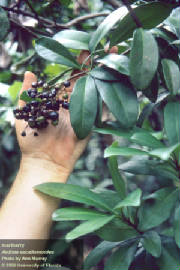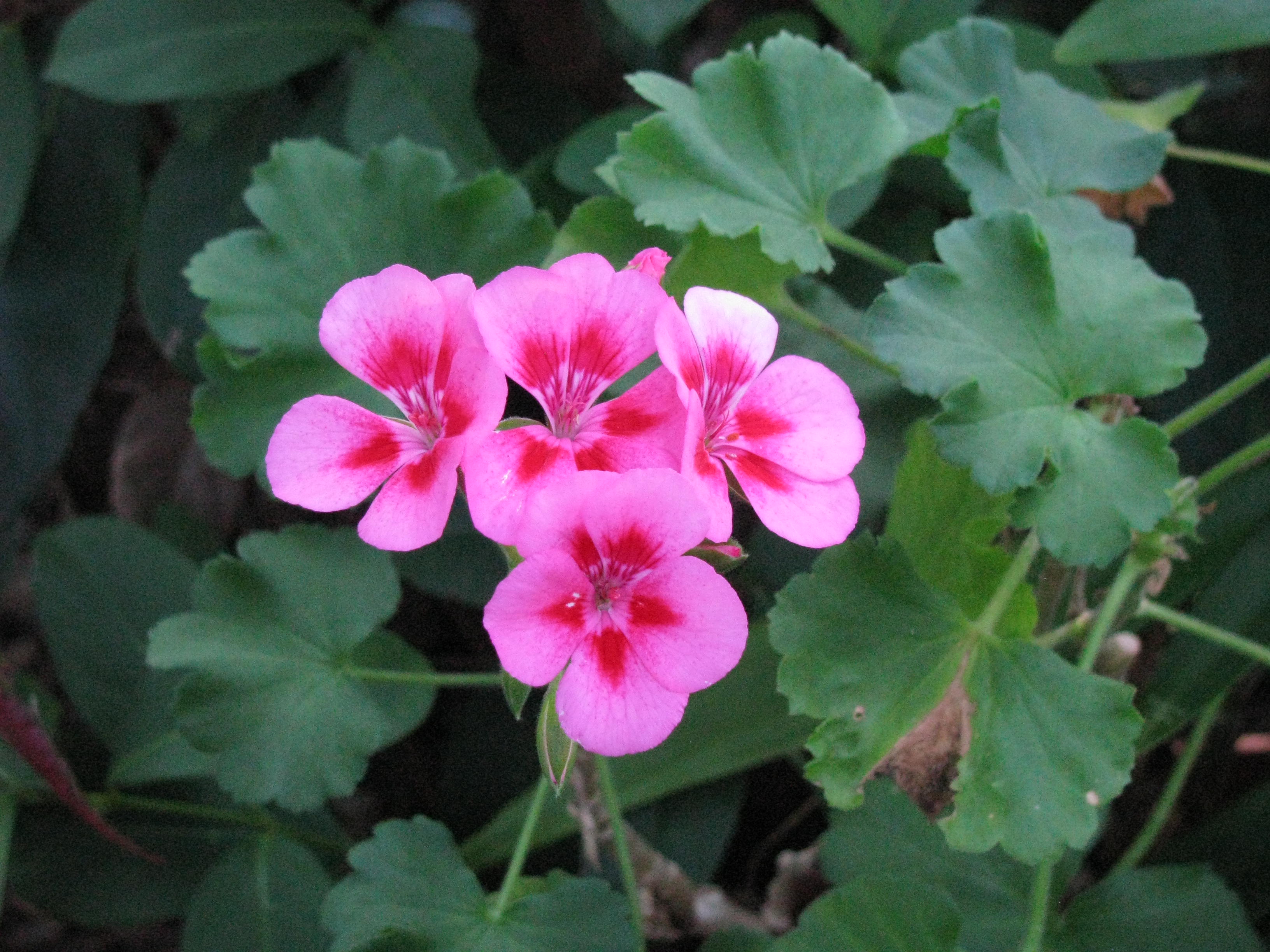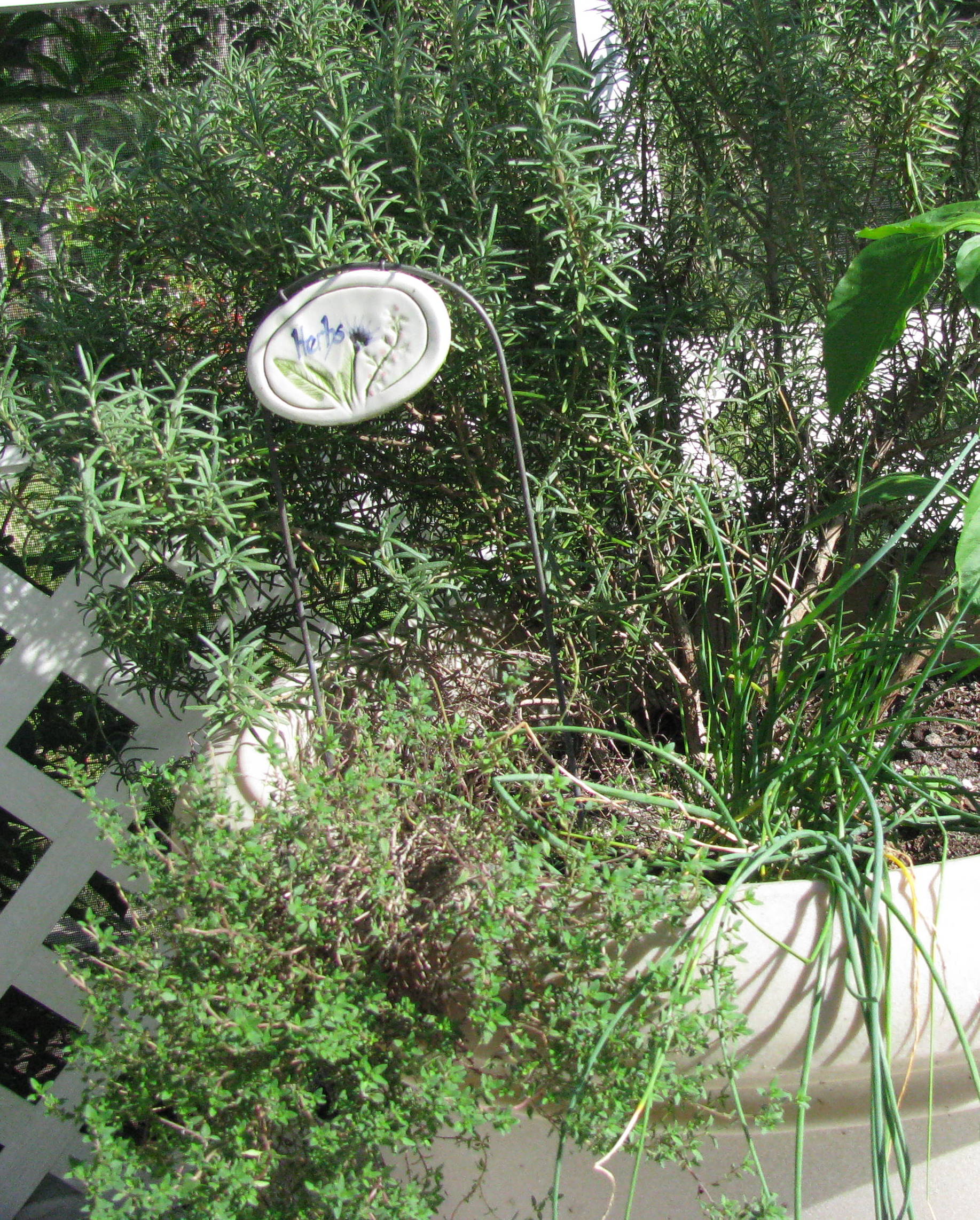
Fall is a good time to plant in Florida as long as ample water is provided
to establish what you plant. I am very fond of planting native shrubs because they are usually of value to pollinators
and wildlife. If
If you need a large, dense, evergreen
shrub, Marlberry (Ardisia escallonioides) is a great choice. It grows well in acid
or alkaline pH soils in part shade to full sun. It does prefer well drained soil and is drought tolerant once established.
Marlberry matures to about fifteen feet tall and eight feet wide. The intermittent white blooms attract pollinators
and butterflies and are followed by small red-purple fruit favored by birds. This plant takes pruning well and can be
grown into a nice hedge or screen.
Picture - University of Florida IFAS
Is it cooler yet? Fall in Florida is a lovely time. The days are sunny and just a bit cooler. Plants
begin to perk up to the cooler night temperatures. This is the time of year that working in the yard is actually pleasant.
Now
is also the time to control winter weeds in the lawn. Watch for night time temperatures that are 55 - 60 degrees for
several nights in a row, and then apply a pre-emergent herbicide. Be sure that the herbicide you choose is labeled for
your type of grass. For more information consult Weed Management in Home Lawns on the Internet at: http://edis.ifas.ufl.edu/ep141.
Because fall is like spring in other parts of the country, we can plant some of the same spring

annual flowers now. Geraniums, begonias, petunias, pansies and snapdragons
can be planted as soon
as the plants are available. Seeds of
calendula and nasturtium can also be planted directly in the ground.
Prepare the bed by spading in compost or other organic matter along with some slow release fertilizer just before planting.
The
fall and winter months are perfect for starting an herb garden. Many

herbs that succumb to our hot steamy summers will thrive during the cooler months. If you don't have a lot
of space, herbs grow well in containers. More information on growing herbs in Florida is available on the Internet:
Herbs in the Florida Garden http://edis.ifas.ufl.edu/vh020Mulch the bed well after planting to conserve moisture
and keep down weeds. Remember to keep the mulch two to three inches away from the base of each plant.
Now
is the time to add bulbs to your landscape. Amaryllis bulbs (Hippeastrum spp.) could
be called the Florida tulip. They make a striking bloom show in the spring when planted in groups of 10 or more in landscape
beds. Remember, when planting amaryllis bulbs, the collar and the very top of the bulb should be above the soil line.
Keep the mulch away from the top of the bulb. You can also plant Crinum or Swamp Lily bulbs (Crinum americanum)
now for spring and summer bloom. Well-suited to hot, dry, locations, Crinum Lilies grow from what are among
the largest true bulbs, some weighing over 40-pounds. Crinums will recover quickly from killing frosts in our area.
Deer have not eaten the plants of Crinum bulbs in my garden, but they occasionally eat the foliage of the Amaryllis.
Fertilize citrus trees
this month using a "citrus special" formulation of 8-8-8. Apply fertilizer
to the entire rooting area which usually extends well beyond the drip line of the tree. The amount of fertilizer varies
according to the age of the tree. Fertilizer should be applied three times a year in February, June and October. For
additional information see

